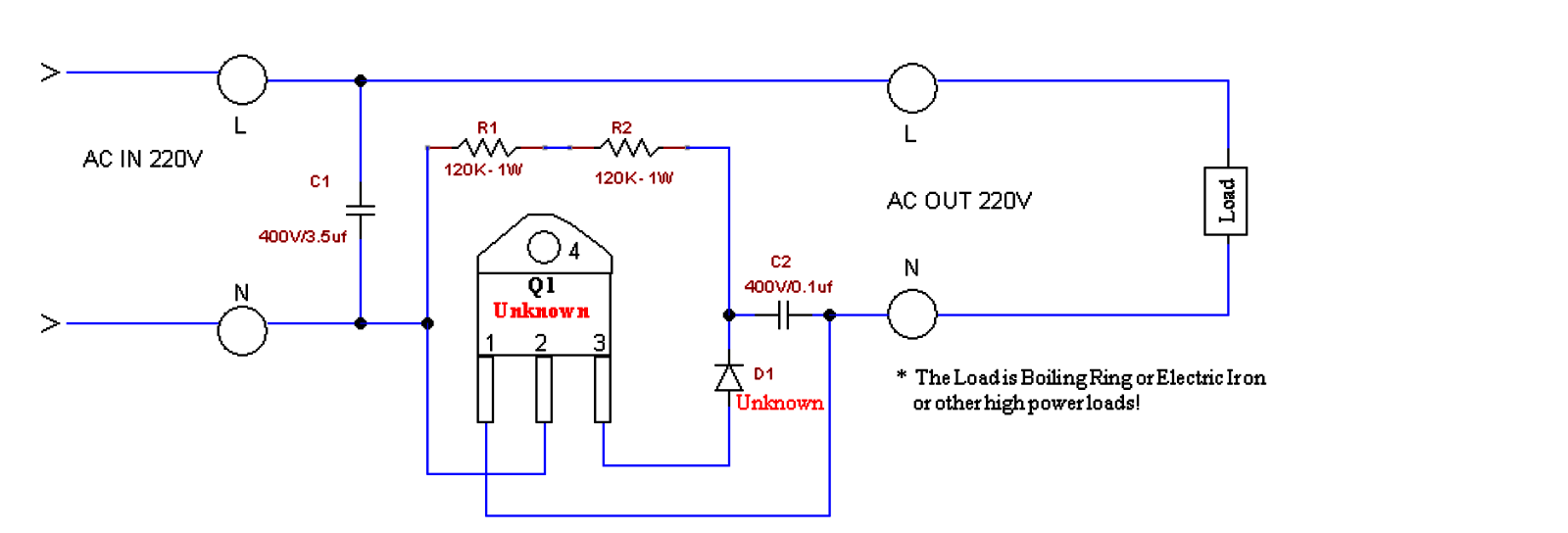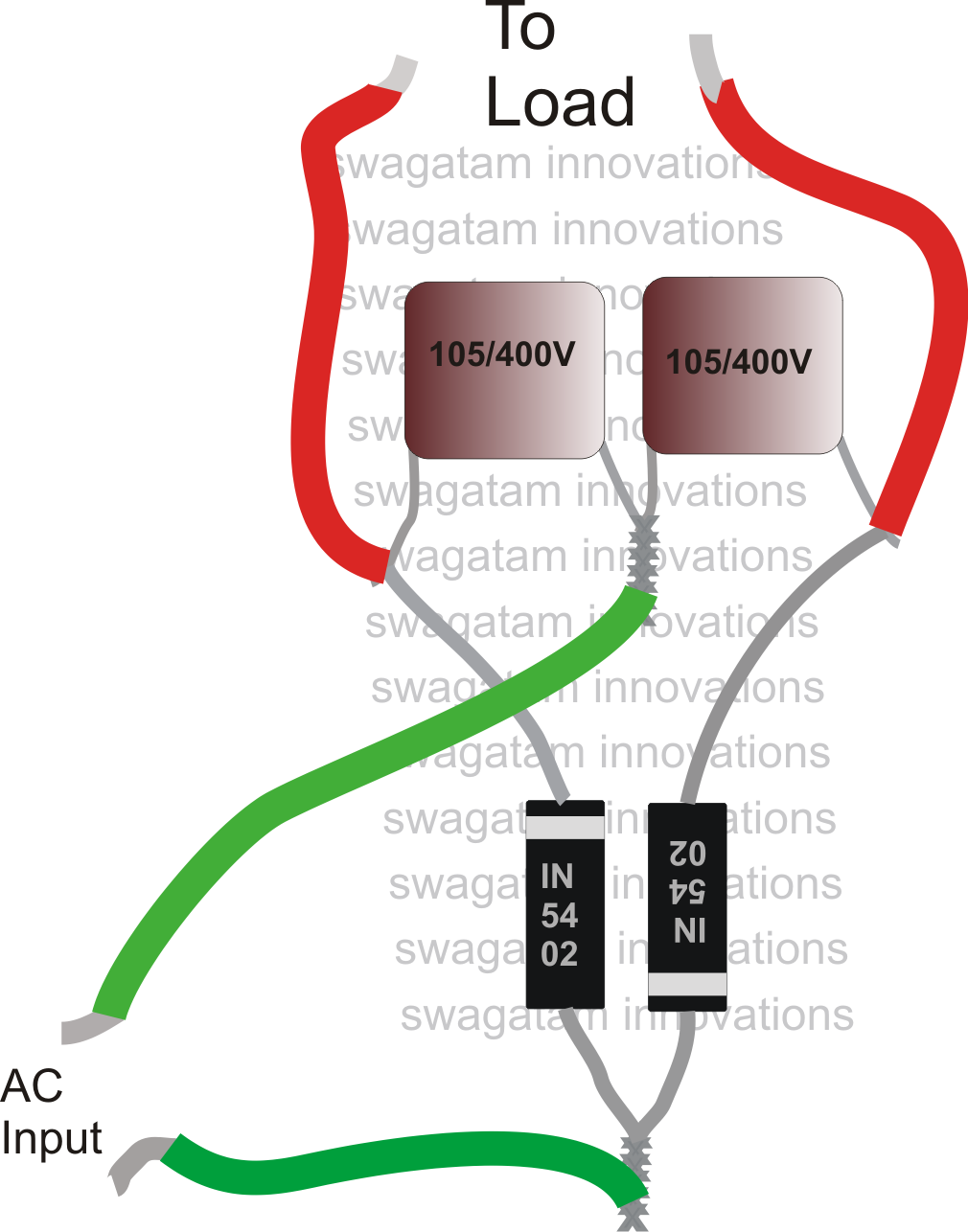The post describes an alternator or generator power booster circuit, Let's find out more about the .

Circuit Justification
The circuit seems to be a straightforward AC voltage booster. The main part which can be to blame for providing the excess power is the high voltage capacitor C1 which charges up with each AC cycle and reverts the power by means of the switching triac into the linked load.
The load thus gets added power due to the switching high voltage capacitor by way of the triac.
The triac is usually a BTA41/600A, which replies and switches ON the moment the diac fires. The minimum voltage necessary for the diac to fire is around 30 volts.
The above idea may also be used with the following circuit which happens to be less complicated than the above and is also very much cheaper.

The capacitor ratings might be altered and tried as per the load, and individual choices.
However this circuit can be utilized only for heater applications such as irons, heaters, geysers, ovens, toasters, blowers, dryers, hot air gun etc.
Comments
Please can the second circuit be used to boost inverter power?
It will only boost voltage, not power, and will work only for resistive loads..
Please how many watts is the second circuit? I build it and is not working with my soldering iron not even to talk of iron Sir. Please I need an urgent help because this is my project topic and to be submitted soon. Thanks
It is a tested design and it worked for me beautifully, my soldering iron became red hot within 1 minute.
It is nothing but a simple voltage doubler circuit.
310V x 50 mA = 15 watts
The first circuit needs clearification
OK I want to boost power from a 600watts generator to supply my electric iron and cooker what will be the rating of the diac
The 2nd circuit has zero vibration in all
Generator
The first one lacks clarity and unsure if it would work. The second one is a half-wave voltage doubler, DC output. When capacitance is small and load-current is large, the voltage will be unregulated, spiky, or contains more ripple.
That’s exactly why the second circuit is recommended for resistive loads….
Hello Patrick, the first circuit is not yet tested by me so I am not sure about it.
Good morning Sir, is the first circuit working? Because I designed it but the output voltage is reading 110v